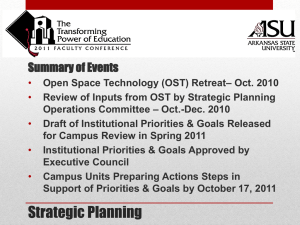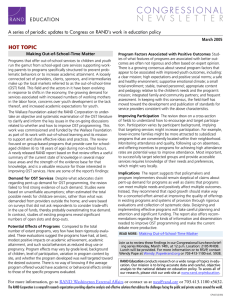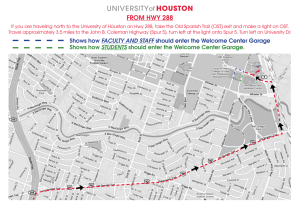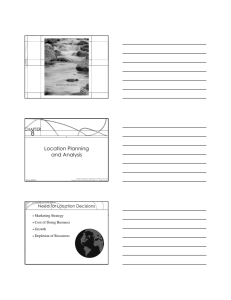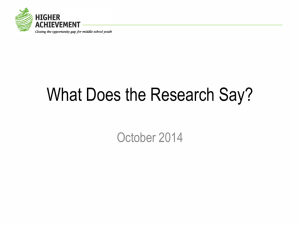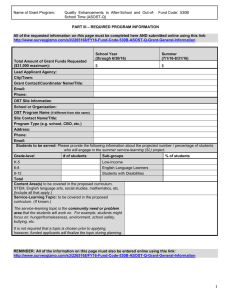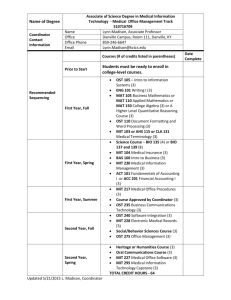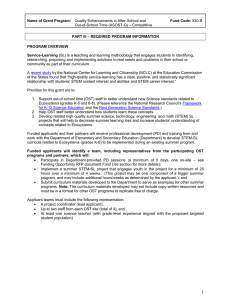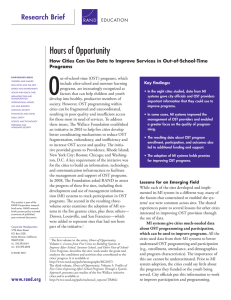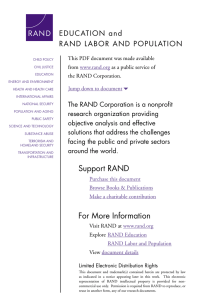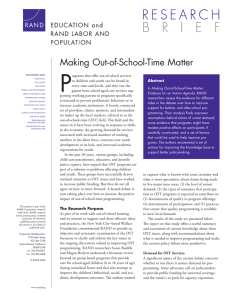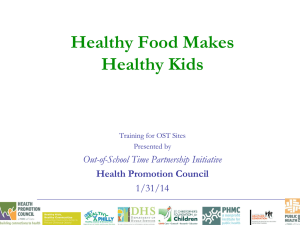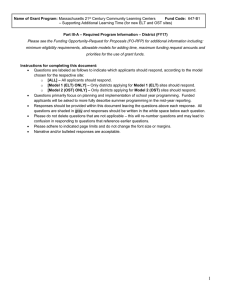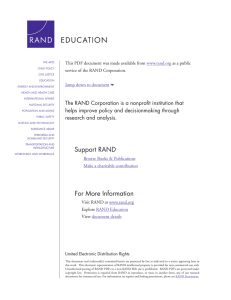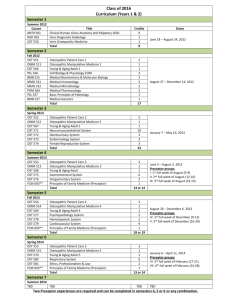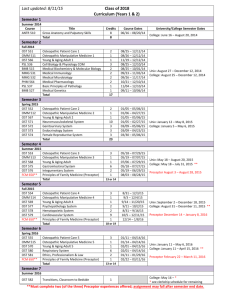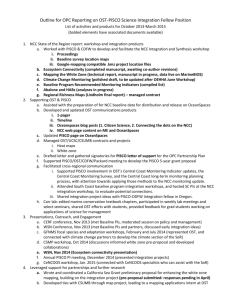National Summer Learning Association
advertisement
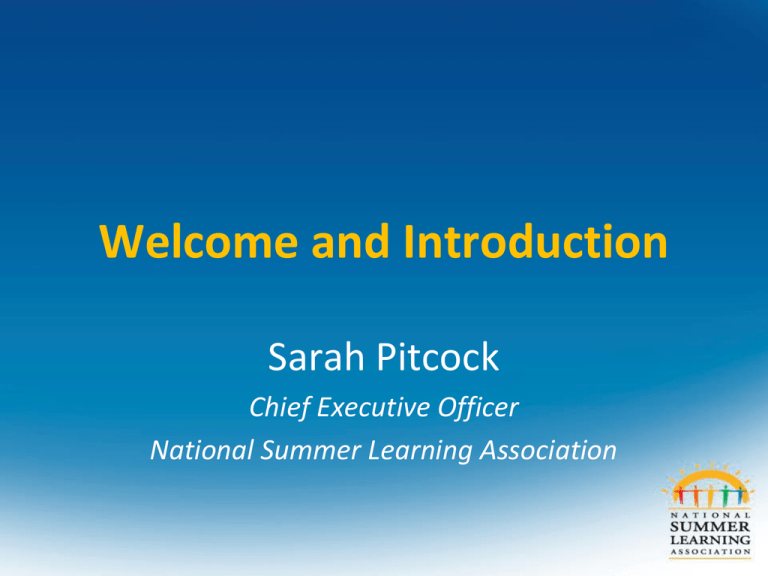
Welcome and Introduction Sarah Pitcock Chief Executive Officer National Summer Learning Association NSLA’S Mission and Goals The National Summer Learning Association is the only national nonprofit focused on closing the achievement gap through high-quality summer learning for all young people. Our vision is that all young people have access to highquality summer learning experiences to help them succeed in college, career, and life. NSLA: Recognizes and disseminates what works to influence policy and practice Develops and delivers capacity building offerings to providers and cities Convenes and empowers actors focused on children and youth Why Research Matters Maximizing an increasing policy focus on time and learning- opportunity to make the case with data Creating a common language and agreement on what quality looks like, building an OST workforce Making possible citywide systems for OSTagreement on power skills, comparisons! Why Research Matters It’s hard to solve a problem you don’t understand. Wallace Foundation Research Making Summer Count: How Summer Programs Can Boost Children’s Learning RAND Corp. (2011) Getting to Work on Summer Learning: Recommended Practices for Success RAND Corp. (2013) www.rand.org Summer Learning Works • High-quality programs can reduce summer learning loss and lead to academic and non-academic gains (McCombs, 2011) • Gains can endure for two years after participation • Summer learning programs can contribute significantly to young people’s health as well as learning • Summer reading programs, when coupled with supports, can also reduce learning loss and lead to gains. (Kim, 2004, 2006, 2008; READS Program) Characteristics of High Quality Programs • • • • • • • • • Smaller class sizes (1:5- 1:8) Providing individualized instruction Involving parents ~150 hours per summer, at least two consecutive summers High-quality instructors (involve professional educators) Aligning school year and summer curricula Including content beyond remediation Tracking effectiveness Remove structural barriers (transportation, full-day programming) • Entice students How research is shaping our work State ELO task forces (TX, WA, NJ) looking at evidence-based models. Opportunity and responsibility to legislate quality in OST. California Summer Matters Campaign: Ready to act on data when funding came back, tracking attendance, expanding access and improving quality How research is shaping our work My Brother’s Keeper and Campaign for Grade-Level Reading: population-level change requires a range of research-based interventions: • • • • book distribution programs parent workshops Lunch at the Library comprehensive enrollment based programs. Key OST Research Priorities Longitudinal data Holistic outcomes Year-round connections between school, afterschool and summer learning data Disaggregated data- understanding how programs impact different kinds of young people and why Changing parent perceptions- if we build it, they will not necessarily come Key OST Research Priorities Participation data and natural comparison groups Creating infrastructure at the state and local level that make telling the story through data easier Questions to Consider What are we learning from the data? What are we doing with it? How does it relate to how we plan and evaluate next year? How can we create economies of scale for OST evaluation? What is the least common denominator we need to measure?

